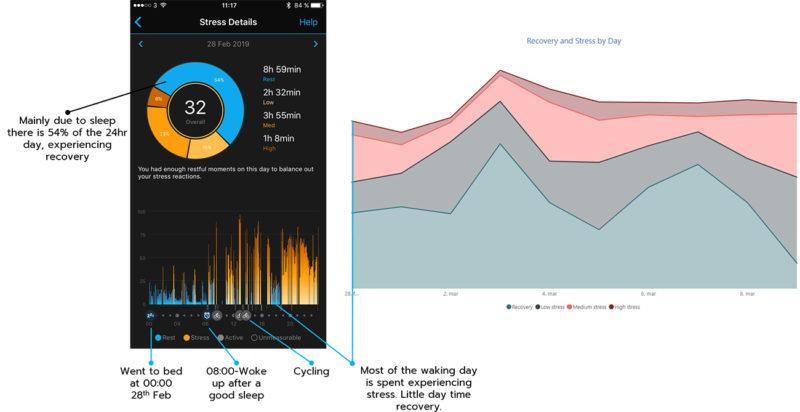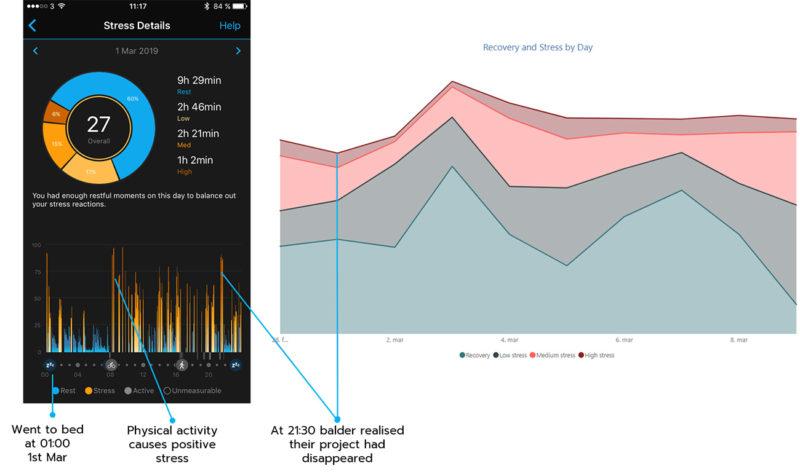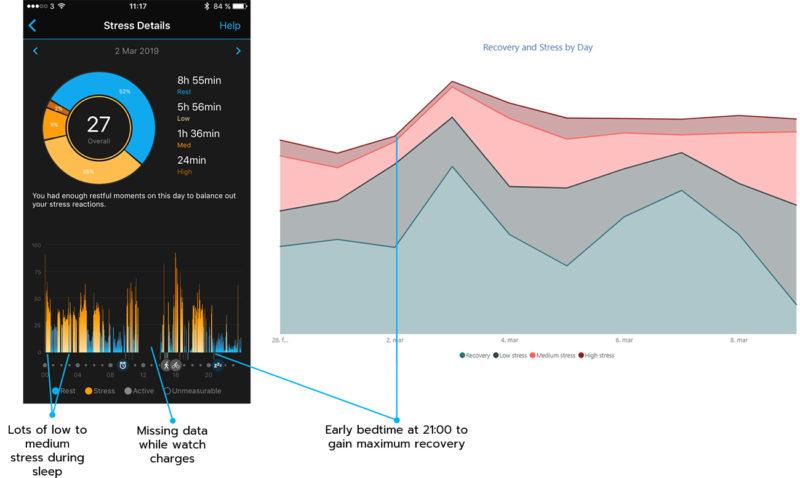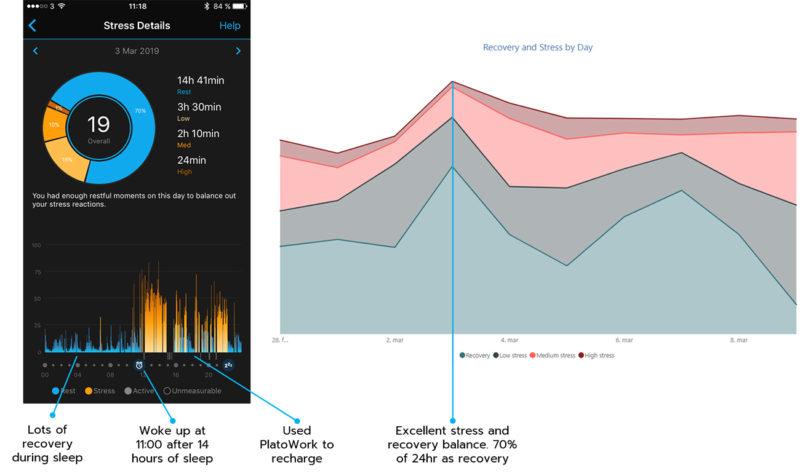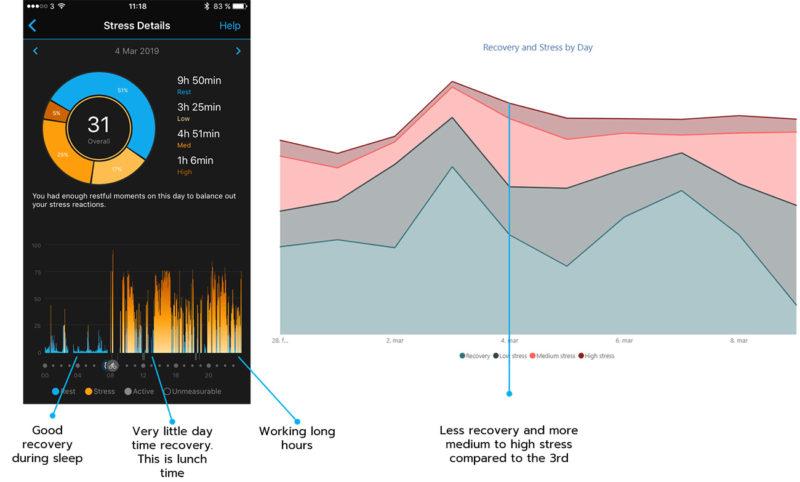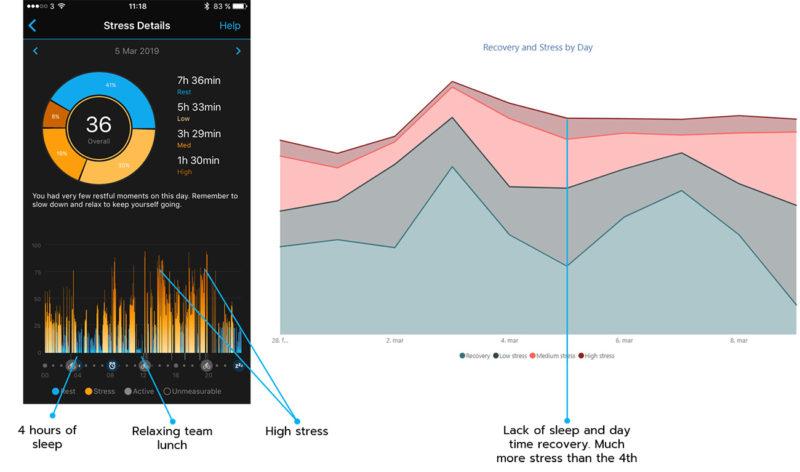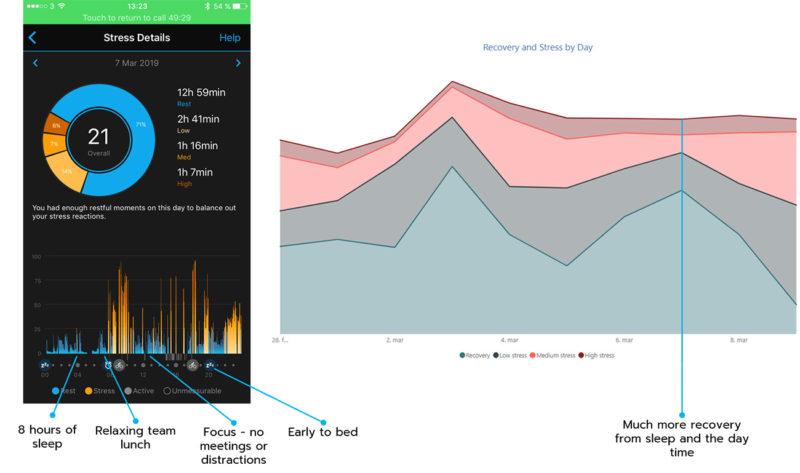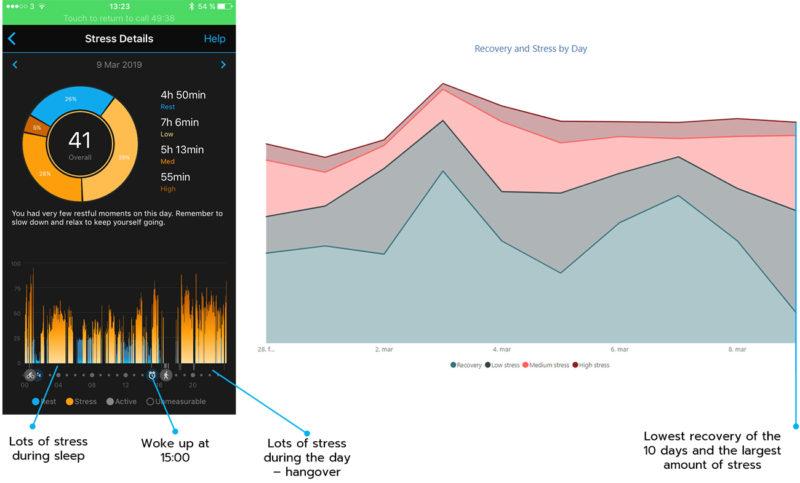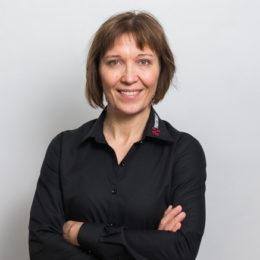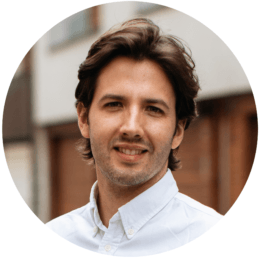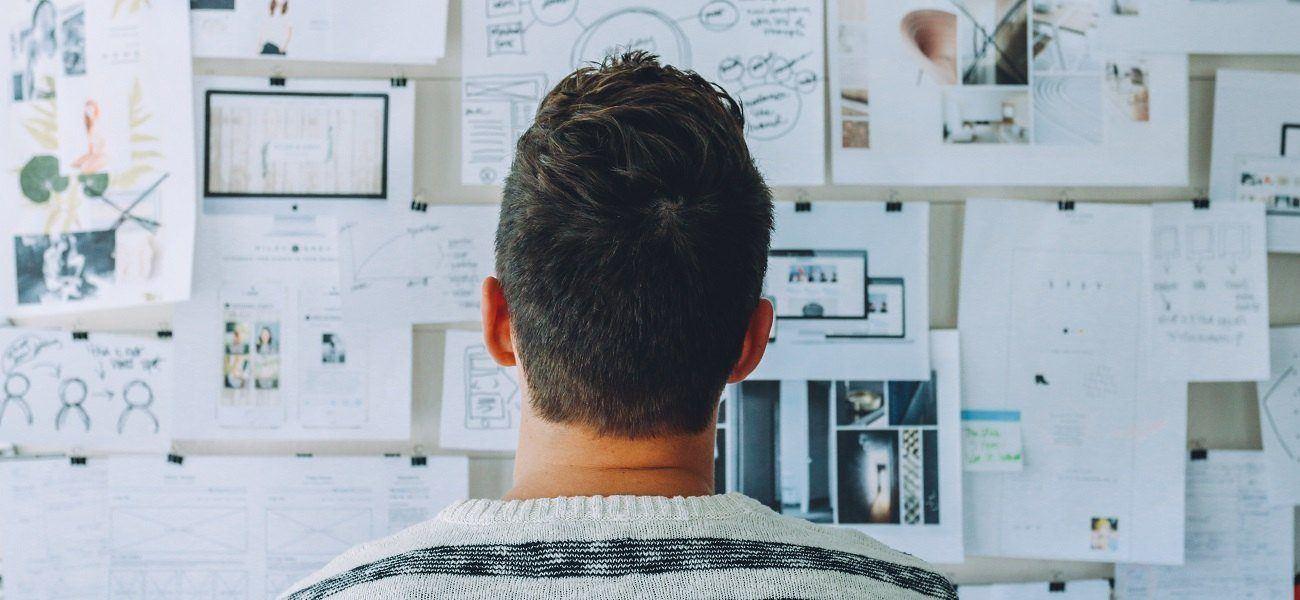
Jason Howlett is the co-founder of Manpremo, a company that delivers biofeedback and data-driven development journeys to help people and organizations to thrive. Jason uses a combination of applied sciences and data to optimize brain performance and the ability to change mindset and behavior.
Ever wondered what crowdfunding does to your stress levels?
This article illustrates Balder Onarheim’s experience of crowdfunding PlatoScience’s product, PlatoWork, in an impressive feat of under 18 hours. We will illustrate 10 days of Balder’s journey from both a subjective perspective (what Balder felt and thought), combined with an objective perspective (impact on his body and brain), using data from wearables.
Balder is a serial entrepreneur and former associate professor in creativity at the Technical University of Denmark. He is the founder of the Copenhagen Institute of NeuroCreativity and CEO at PlatoScience, making the world’s first headset for boosting cognition.
Is Your Behavior Making Things Better or Worse?
People tend to be quite good at predicting what causes them high stress. Although people tend to be much less aware of what causes them low to medium stress; and even worse at guessing what promotes their effective recovery. HRV data helps to develop this self-awareness.
One way in which we, at Manpremo, help people to learn more about their stress and recovery patterns is using Garmin wearables that support All day Stress & Recovery feature, linked up to our application, MAHOUT.
Garmin wearables use Firstbeat’s advanced performance analytics to transform HRV data into information people can actually use. They provide quick and easy insight at moment’s noticed throughout the day, and for a closer, more granular look we can always turn to Firstbeat’s ECG measurements (Lifestyle Assessment). Combined these tools reveal whether your behavior is making things better, worse or neither?
Our mission is to support people in being at their best, when it matters. Our intention is not to preach. Life should be livable. If you practice the behaviors that support your mental and physical health 80% of the time; your body will be resilient enough to cope with the other 20%.
The Big Picture — 10 Days
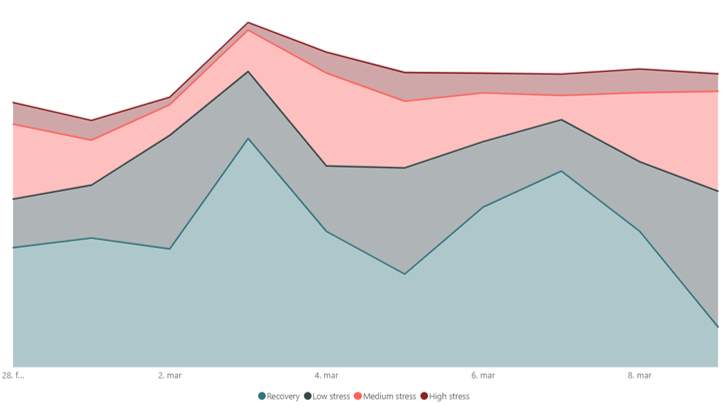
Area graph from Manpremo MAHOUT
The area graph above, shows Balder’s stress and recovery balance over 10 days, from February 28th 2019 until and including March 9th 2019.
As you can see, Balder’s experience contains some particularly stressful days, during which he spends considerable hours experiencing stress and very little time experiencing recovery, even during his sleep.
For example on March 9th, he experiences much more stress compared to recovery. You can see there is a very low amount of recovery (shown by the bottom line), large amounts of low stress (second line up) and medium stress (third line up). He also has some high stress (top line).
Mild, short-term stress can be beneficial. We become more alert, our thinking rate increases, concentration improves and our motivation and performance is benefited.
The problem occurs when we experience long-term stress with no intermittent recovery, like Balder does on March 5th and 9th. Unbroken high stress and the resulting high alertness breaks down our body and brain and can lead to disease and exhaustion. If Balder was to continue this pattern he would be at risk of burnout.
We will cover Balder’s days in more detail below in addition to covering the importance of sleep and daytime recovery.
Crowdfunding Experience Starts
Before we dive into the experience, let’s take a quick look at crowdfunding. It is essentially a form of crowdsourcing in which many people contribute small amounts of money to fund a product or project. This is facilitated by a digital platform accessed via a website. Crowdfunding is widely regarded as being stressful: there have been reports that the success rate can be as low as 9 %.
On 28th February 2019 Balder and his team have decided to go ahead and crowdfund their PlatoWork headset on Indiegogo platform. The big goal is to get the crowdfunding project launched on the 4th March, in time for planned media exposure on the 5th.
The additional graph to the left above comes from Garmin’s Connect app. It shows Balder’s stress details for February 28th when Balder and his team worked late on the 28th, until 00:00, to start the process off.
Each bar is 3 minutes of Balder’s experience. Blue bars represent recovery, orange bars represent stress. There is a stress score scale of 0–100.
0–25 is rest/recovery
26–50 is low stress
51–75 is medium stress
76–100 is high stress
Disaster Happens
Balder and his team worked hard during Friday 1st March, to get all the material submitted, before the deadline at 17:00 CET. They managed to make the deadline, although at 21:30 disaster struck! Balder noticed that all of their content was missing from the campaign page, with no possibility to recover it. Quite a setback to say the least!
As you can see, above, Balder experienced peaks of stress at 21:30. You can also see below that during the night between 1st and 2nd March there was a lot of stress throughout his sleep, with little recovery.
Prioritizing Sleep and Recovery
On Saturday 2nd March (image above), Balder had a call with Tine Presterud, PlatoScience’s head of communication, and decided that they would postpone the launch. Tine should have some well-deserved rest.
Balder set to work to get everything back in place. After working hard, Balder took the wise decision to prioritize his sleep that night. He took some time to recover before bed, by reading and avoiding digital devices. Balder was in bed at 21:00 and awoke refreshed at 11:00 on Sunday 3rd (image below).
Taking 30–60 minutes to relax before bed without digital devices, especially those with screens, can make a significant difference to your recovery. More optimal ways to spend this time include: taking the time to read, chat with a partner/friend, or simply breathe/meditate. This helps your body to follow its natural rhythm of preparing for sleep.
Regarding the sleep itself, even though it is individual, most people benefit from 7–8 hours. Sleep is by far the most critical factor in recharging your body and brain and maintaining your well-being and ability to perform.
This wise decision not only helped Balder gain some much needed rest during his sleep, it also provided him with much more capacity to deal with the rest of the preparation work. Balder’s stress and recovery balance was much better on Sunday. Balder achieved the lowest stress score of this 10-day experience: 19/100 (with the average of the 10 days being 29 and the highest 41).
Slowing Down on Sunday
On Sunday, Balder worked although he took it nice and easy. He started the day with a relaxed breakfast with his partner Mette, before working from home. With no disruptions he worked with good structure and focus. He also took time to recover by using his PlatoWork device just after 16:30. As you can see above, there was a reduction in stress and an increase in recovery for the following 1.5 hours.
Daytime recovery makes an amazing difference to how effective and efficiently our brains work. Our brains are not machines that can work at high speeds continuously. The cognitive system in the brain that we use at work consumes a huge amount of energy and it soon tires. Regular recovery, even as little 3–20 minutes, makes a huge difference.
Fast-paced Monday — Launching the Crowdfunding Project
On Monday 4th, Balder worked with Tine for 13 hours straight, to get the project launched at 21:06 on Indigogo. This brought an immense sense of relief. As you can see below there is not much blue/recovery during the day after Balder arrived at work. Although Balder’s stress levels do start to decrease from 21:00.
Balder was not finished; he still had the business as usual to catch up on, which he finished at 03:00 am. He was in bed at 04:00. What a day!
Hard Works Pays Off
On the 5th March, Balder’s lack of sleep and the awareness of the project being live took its toll. His stress was consistently medium to high, throughout the day, especially between 13:00 and 15:00.
Balder did aim and manage to get some solid recovery from 11:00–12:00, with a relaxing team lunch and then again after 15:00, when he got the amazing news that they had already reached their goal in less than 18 hours!
Getting Back into a Sustainable Rhythm
With a sense of achievement, Balder managed to get himself back into a much more sustainable rhythm for the next two days. On the 7th he got a great stress and recovery balance, with a low score of 21/100.
Much of this due to his focus on sleep and day time recovery. During the 7th Balder cleared his calendar of meetings and was able to have time to focus. He also enjoyed a relaxing team lunch. The team received the amazing news that they had now reached 200% of their target! An achievement worth celebrating!
Time to Celebrate
When it came to Friday the 8th, Balder was conscious of how stressful his week had been, although very pleased with what his team had achieved. He stopped work at 20:00. His aim was to recharge and celebrate by having some drinks with friends, before taking a very long sleep.
Balder was out with friends on Friday, before getting to sleep at 02:00 am. He slept until 15:00 (13 hours) on March 9th. As you can see, even though Balder got 13 hours of sleep, most of this time is spent with his body in a stressed state.
The impact of alcohol comes as one of the biggest surprises to most people. Many of our customers have expressed that a glass or two of wine/beer, helps them to fall asleep faster and they think that they sleep better.
Alcohol actually causes stress in the body soon after we consume it. We might fall asleep faster, but our sleep is less recovering. Even 1 unit of alcohol can eliminate our effective recovery during our sleep for hours after its consumption.
Our bodies also have a 24 hour circadian rhythm, which means for most people we get the most optimal recovery between 22:00/23:00, until 06:00/07:00 am. Any sleep outside of this window will be sub-optimal, although it might still provide recovery.
Balder’s Personal Reflections on His Experience
“Crowdfunding is not only about raising the money, or displaying your product to the world, but exposing yourself and your product in a very naked way, where failure is not something you can hide in your internal stats.
A friend of mine, who has previously done two successful campaigns, told me: “it’ll be the best and worst thing you’ll ever do” — so I was sort of prepared for it to be rough.
But as with everything else, you might feel prepared, but don’t really understand a given pain before it hits you in the stomach. I know from data that sleep deprivation has an immediate impact on my performance, so a crucial preparation was to have a night shift team; so even though I didn’t sleep much during the launch days, the sleep I got was without worries.
While I’ve been tracking and analyzing my stress and recovery data for almost a year after completing a 7-day Firstbeat Lifestyle Assessment and coaching with Jason Howlett, it still surprises me, how accurately HRV detects the immediate effect of my actions.
In this case, I was impressed to see the powerful impact our team’s daily screen-free, ‘no work talk’ lunches had on my recovery during the launch week.”
This article was originally published on Medium.com
Want to know what your stress and recovery levels look like? Or how stressed your employees are?
You might also be interested in

How to Make Working from Home Work for You
Put these steps in place and enjoy the benefits of remote working.
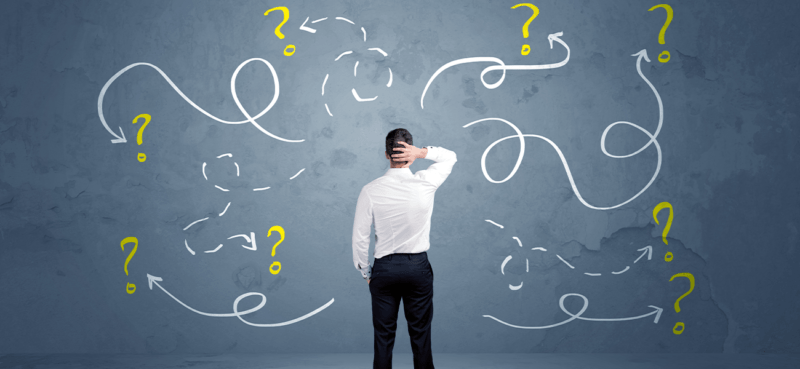
Balancing Good and Bad Wellness Choices: How to Get it Right?
Finding the balance between good and not-so-good choices is about what works for you.
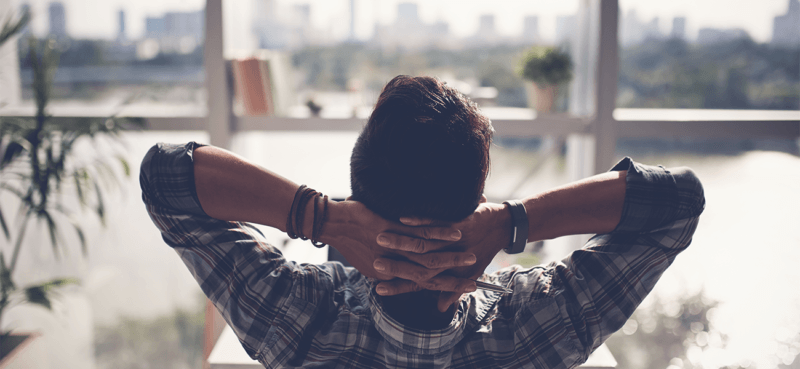
Rest Is Not the Same as Recovery – And 4 Other Surprising Things I’ve Learned About Resilience
What Firstbeat’s Heart Rate Variability analytics can tell you about resilience.
